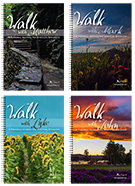The Initial Question
As far as we know today, there is no surviving original manuscript of any of the documents that comprise the New Testament. Throughout the ages, the text has been transmitted by copying and recopying. Today's translators rely on copies of copies of copies of copies... Because great care was taken during the copying process, there is basic general unity about what the texts say regarding major doctrines. There are textual differences, however; and scholars argue about which versions best represent the thoughts and intentions of the original writers.
All translations start by identifying which documents will be considered as the best representation of the original. Translators may follow one version consistently, or they may evaluate possibilities among many.
If you want more information about the documents that serve as the "original" versions of Biblical texts, jump ahead to the discussion Concerning Source Documents.
Ready for your first question?
Which of the following positions best describes your point of view regarding the most authoritative "original" text?
Some people believe that the version of the Greek New Testament text that was first received in Europe during the fifteenth and sixteenth centuries contained the exact words that were favored and preserved by God. This "received text" is called Textus Receptus. People holding this view often believe that this text should never be changed because God is unchanging. Other older Greek New Testament manuscripts that were subsequently discovered are considered flawed. If you agree with this position, you may prefer to choose from among the Bibles Based on Textus Receptus.
Some people believe that the oldest existing manuscripts are more likely to be closer to the actual content of the original texts. They believe manuscripts copied more recently—even if they were copied in greater numbers—are more apt to include comments and opinions (and even mistakes) made by generations of scribes. Because there is no single oldest manuscript of the Biblical texts and researchers continue to bring new information to light, scholars work with ancient documents to compile a version of the text they believe to be the best possible interpretation of the original manuscripts. This compiled version is called the Critical Text. Scholars update it when they believe new discoveries warrant making changes. Nestle and Aland's Novum Testamentum Graece, currently in its 28th edition (abbreviated NA28), is the most widely accepted representation of the Critical Text. If you agree that scholarly research and recent discoveries can help recover a more authentic representation of the original manuscripts, you may prefer to choose from among the Bibles Based on the Critical Text.
For some people, the most important questions pertain to the specific list of books chosen to be included in the Bible or other considerations. Different streams of Christian thought may embrace or exclude certain texts. As a result, the number of books in the Bible varies among Protestant, Roman Catholic, and Orthodox groups. In addition, some faith communities have introduced innovative interpretations or supplemental works of special status that stand alongside the Bible. Furthermore, for some people the specific original documents are not as important as the form, language, and study tools incorporated into the resulting text. Information about Bible versions for Specific Faith Communities and Other Particular Needs provides additional details.
So, with that background, if you haven't already made a selection, please pick one of the following answers:
- I'd like to choose from among the Bibles Based on Textus Receptus.
- I'd like to choose from among the Bibles Based on the Critical Text.
- I'd like to choose from among the Bibles that serve Specific Faith Communities and Other Particular Needs.
Or, if you want to start over, you can return to The Beginning.


